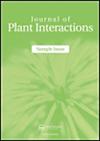六棱李对重金属的解毒、耐受、积累机制及性能增强研究进展
IF 3.3
3区 生物学
Q2 PLANT SCIENCES
引用次数: 4
摘要
摘要随着工业化和城市化进程的加快,重金属污染日益成为公众健康和环境健康的严重威胁。植物修复是一种可持续的、被广泛接受的技术,因为它成本低、操作简单、环境安全,被认为是一种很有前途的环境修复应用方法。超积累植物是植物修复的核心,研究其积累、解毒和HM耐受机制是植物修复进展的基础。深入研究以了解超积累植物的理化和耗散途径,如Leersia hexandra Swartz(L.hexandr),这可以作为环境修复应用中的有用工具。L.hexandra作为一种铬超积累植物,也是修复铜和镍污染土壤的一个显著选择。因此,本文总结了以往关于L.hexandra解毒策略/耐受机制和增强其特性的研究,这将启发其未来在可持续环境清理倡议中的应用。本文章由计算机程序翻译,如有差异,请以英文原文为准。
Advances in heavy metals detoxification, tolerance, accumulation mechanisms, and properties enhancement of Leersia hexandra Swartz
ABSTRACT Heavy metal (HM) pollution is increasingly becoming a serious threat to public and environmental health with more-than-ever rapid industrialization and urbanization activities. Phytoremediation is a sustainable and largely accepted technology because of its low cost, simple operation, environmental safety and recognized as a promising approach for environmental remediation applications. Hyperaccumulator plants are the core of phytoremediation, and the study of their accumulation, detoxification, and HM tolerance mechanisms is fundamental to the progress of phytoremediation. In-depth investigations to understand the physiochemical and dissipation pathways of hyperaccumulators such as Leersia hexandra Swartz (L. hexandra) which can serve as a useful tool in environmental remediation applications. L. hexandra as a chromium hyperaccumulator plant, can also be a remarkable choice to remediate copper and nickel contaminated soils. Therefore, this article summarizes the previous studies on the detoxification strategies/tolerance mechanisms and the enhancement of the properties of L. hexandra, which will inspire its future applications in the sustainable environmental cleanup initiatives.
求助全文
通过发布文献求助,成功后即可免费获取论文全文。
去求助
来源期刊

Journal of Plant Interactions
PLANT SCIENCES-
CiteScore
5.30
自引率
6.20%
发文量
69
审稿时长
>12 weeks
期刊介绍:
Journal of Plant Interactions aims to represent a common platform for those scientists interested in publishing and reading research articles in the field of plant interactions and will cover most plant interactions with the surrounding environment.
 求助内容:
求助内容: 应助结果提醒方式:
应助结果提醒方式:


